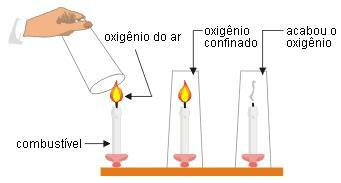Who doesn't like to eat a cheese bun? Probably, you and many people you know are very fond of this food. Regardless of the origin and date on which the first cheese bread was produced, what matters is that it is widely consumed and is always available to us, whether in the bakery or in our homes. However, do you know the origin of this delicacy so consumed daily? What about the chemistry of cheese bread? Are we going to know everything about this food?
The truth is that the origin of cheese bread is not right. There is only speculation that it was made for the first time on farms located in the region of Minas Gerais, around the 18th century. This speculation is made because, at that time, the lords of the farms were in the habit of consuming bread, but the wheat flour needed to make it was not so easily found in Brazil.
As at that time Brazil did not produce wheat - which, being imported, was very expensive, took too long to arrived and it wasn't always good quality — the cooks had to turn around to make their own bread. Sirs. The alternative they had was polvilho, which was produced a lot here because the country has always been a great producer of cassava.
At the same time, there was a large surplus of cheese stocks in Minas Gerais and they began to harden over time (the famous cured cheese). In order not to waste it, it started to be grated and added to the conventional bread recipe. This, then, would be the origin story of the famous cheese bread.
In addition to its history, the chemistry present in cheese bread is also very interesting. There are several chemical substances present in this food, such as:
mineral salts (important for the proper functioning of the body);
Carbohydrates (components that participate in the production of energy for the body);
Protein (participates in the formation of muscle structures, among other functions);
Lipids (they act as an energy reserve for the body, among other functions);
Water (an important component for the proper functioning of cells, among other functions)
Vitamins (important components for the proper functioning of the body).
The chemicals mentioned are present in the following ingredients used to make cheese bread:
sprinkle
eggs
milk
oil
cheese
Check out the delicious cheese bread recipe now:
NOTE: As cheese bread needs heating to be produced, it is essential that you carry out the steps of the recipe under adult supervision to avoid accidents.
1 kilogram of starch (can be sweet or sour);
7 eggs;
1 kg of grated cheese;
200 ml of soybean oil;
200 ml of milk;
How about following the steps below and preparing your cheese bread? Follow the steps and good appetite:
NOTE: Never touch the stove without the help of an adult and, to prepare the recipe, always use, preferably, thick protective gloves to avoid burns with milk and oil.
1O) Put the milk and oil in a pan. Bring to the fire and heat until it comes to a boil;
2O) Add all the sprinkles to a large bowl and pour the contents that were warmed up on the stove over it. With the aid of a spoon, mix very well;
3O) When the mixture is not so hot, add an egg and mix the dough with your hands until it is all mixed. Repeat the procedure with the other eggs one by one;
4O) Add all the grated cheese and continue mixing until everything is smooth.
NOTE: If the dough becomes hard, you can add a little water to make it softer.
5O) Now just roll up the cheese buns of the size you prefer. If the dough is too sticky, rub a little oil on your hands to help roll it up.
6O) Finally, just heat the oven to 180 OC and put them to bake.
It is necessary to add hot oil to the dust so that, when they come into contact, the dust is burnt (scalded). This is necessary because the starch is a starch (flour) and, when burned, the maltose (carbohydrate present in the flour) turns into gluten, leading to less aggression to the gastrointestinal tract, in addition to favoring the homogenization of the entire Mix.
By Me. Diogo Lopes Dias


